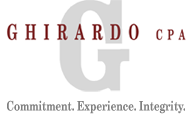Weather Proof Your Business
/Now that we have your attention, we would like to talk to you about liquidity and cash flow. In prior recessions, a business owner could pretty well predict how much their business would be impacted. Unfortunately, all bets are off with the current recession which has hit harder and is more far reaching than any other economic downturn in our lifetime. Nobody is quite sure how long and how deep the current recession will be and the next steps necessary to turn things around. If you’re a small business owner, the uncertain economy makes it difficult to predict what 2009 will bring. One thing for certain is that cash is king. You will need to make sure your company has the liquidity to weather this economic storm and, if possible, take advantage of acquisition opportunities at prices unimaginable 12 months ago.
If you have a financial forecast, great. If you don’t have one, even though it may be difficult to build, it is more important than ever. In today’s market, you have to be able to answer the following questions:
- Based on your key revenue drivers and current pipeline, what is your best estimate of revenues over the next 12-18 months? With that, what is your forecasted net income and cash flow?
- What happens to net income and cash flow if you stress test your forecast under “best case” and “worse case” scenarios?
- What is your current break even point and how can that break even point be reduced?
- What strategies will you implement if revenues or net income fall below the monthly forecast?
- What are your peak cash flow needs over the next 12-24 months and how does that compare to your current bank financing?
Whatever you do, don’t get caught short of cash in this market. Anticipate what may happen. Prepare today....don’t wait until your options are more limited. Consider hiring outside expertise to help make sure you are ready. Our Director of Business Consulting, Paul Breimayer, specializes in financial modeling, profitability analysis, cash flow improvement and helping small businesses obtain bank financing. He has an extensive background in running businesses in good times and in bad. Please do not hesitate to give him a call at 415-408-5021 if we assist you in any way.



